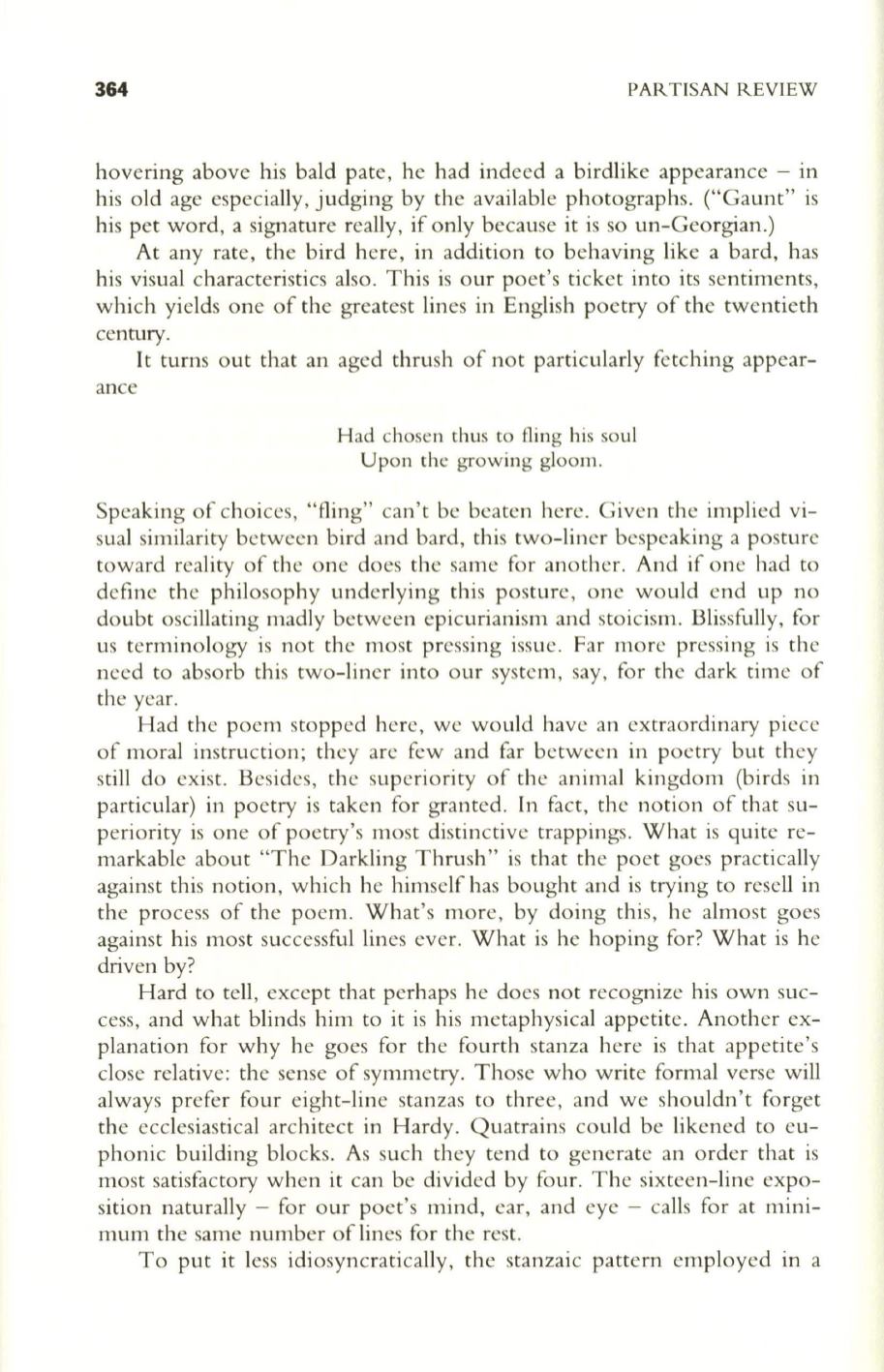
364
PARTISAN REVIEW
hovering above his bald pate, he had indeed a birdlike appearance - in
his old age especially, judging by the available photographs. ("Gaunt" is
his pet word, a signature really, if only because it is so un-Georgian.)
At any rate, the bird here, in addition to behaving like a bard, has
his visual characteristics also. This is our poet's ticket into its sentiments,
which yields one of the greatest lines in English poetry of the twentieth
century.
It turns out that an aged thrush of not particularly fetching appear–
ance
Had chosen thus to fling his soul
Upon the growing gloom.
Speaking of choices, "fling" can't be beaten here. Given the implied vi–
sual similarity between bird and bard, this two-liner bespeaking a posture
toward reality of the one does the same for another. And if one had to
define the philosophy underlying this posture, one would end up no
doubt oscillating madly between epicurianism and stoicism. Blissfully, for
us terminology is not the most pressing issue . Far more pressing is the
need to absorb this two-liner into our system, say, for the dark time of
the year.
Had the poem stopped here, we would have an extraordinary piece
of moral instruction; they are few and far between in poetry but they
still do exist. Besides, the superiority of the animal kingdom (birds in
particular) in poetry is taken for granted. In fact, the notion of that su–
periority is one of poetry's most distinctive trappings. What is quite re–
markable about "The Darkling Thrush" is that the poet goes practically
against this notion, which he himself has bought and is trying to resell in
the process of the poem. What's more, by doing this, he almost goes
against his most successful lines ever. What is he hoping for? What is he
driven by?
Hard to tell, except that perhaps he does not recognize his own suc–
cess, and what blinds him to it is his metaphysical appetite. Another ex–
planation for why he goes for the fourth stanza here is that appetite's
close relative: the sense of symmetry. Those who write formal verse will
always prefer four eight-line stanzas to three, and we shouldn't forget
the ecclesiastical architect in Hardy. Quatrains could be likened to eu–
phonic building blocks. As such they tend to generate an order that is
most satisfactory when it can be divided by four. The sixteen-line expo–
sition naturally - for our poet's mind, ear, and eye - calls for at mini–
mum the same number of lines for the rest.
To put it less idiosyncratically, the stanzaic pattern employed in a


